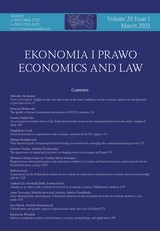REGULACJA PIONOWEJ INTEGRACJI PRZEDSIĘBIORSTW – POMIĘDZY TEORIĄ EKONOMII A PRAKTYKĄ PRAWA
REGULATION OF VERTICAL INTEGRATION OF ENTERPRISES: BETWEEN ECONOMIC THEORY AND THE PRACTICE OF LAW
Author(s): Mikołaj KlimczakSubject(s): Business Economy / Management, Accounting - Business Administration
Published by: Wydawnictwo Naukowe Uniwersytetu Mikołaja Kopernika
Keywords: Vertical integration of enterprises; vertical mergers; vertical restraints; regulators; economic theory and practice of law;
Summary/Abstract: Cooperation of companies in the production chain is one of the less frequently discussed issues in economics, both theoretically and practically. Vertical integration of enterprises can take two forms: vertical mergers and vertical restraints, which are used in different situations in order to reduce transaction costs, ensure stability of supply and overall coordination. Both of these aspects of integration lead to certain internal and external effects which may have either a positive or negative influence on competition, markets and the economy as a whole. Hence, the are differences among researchers as well as regulators in the perception and evaluation of the phenomena associated with vertical integration of enterprises. The aim of this article is to present the current output of the theoretical analysis of regulation of vertical integration of enterprises and a reference of the output to the world’s current legal solutions that are derived from the U.S. laws. The author hypothesizes that, owing to the multidimensional nature and potentially opposite effects of the processes of integration, they must be considered individually, but a certain group of determinants that can help in the evaluation of these processes in terms of competition and welfare may be indicated.
Journal: Ekonomia i Prawo. Economics and Law
- Issue Year: 8/2012
- Issue No: 1
- Page Range: 107-118
- Page Count: 12
- Language: Polish

